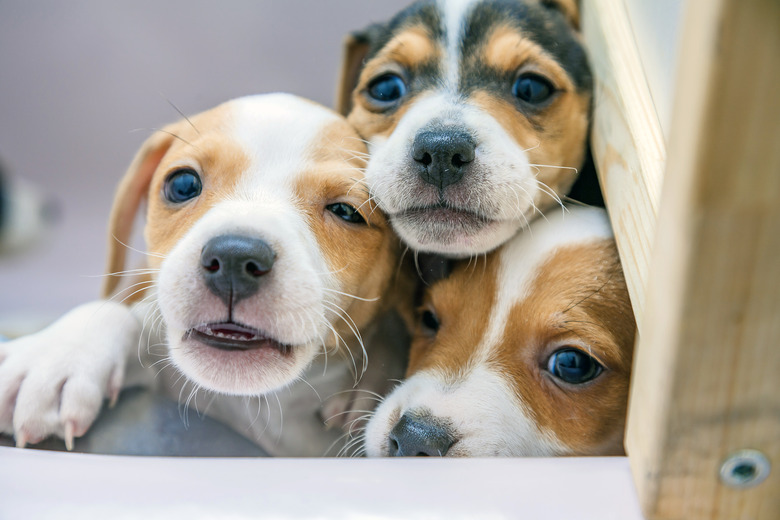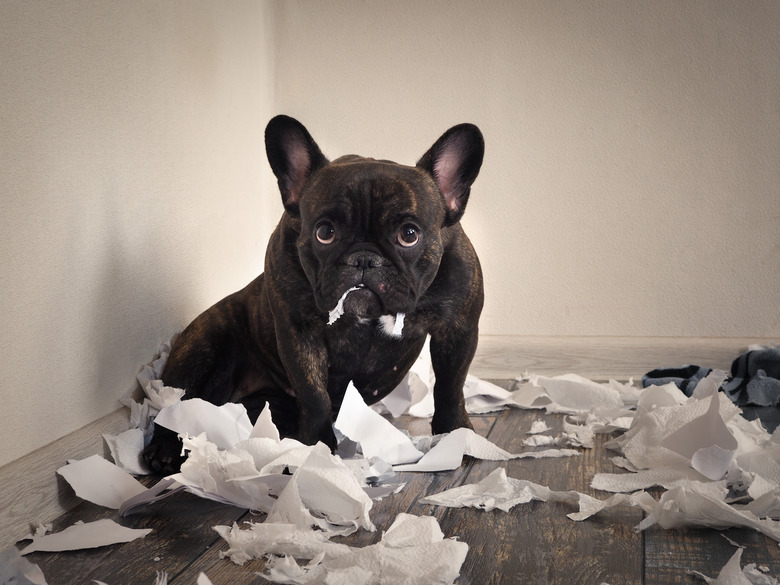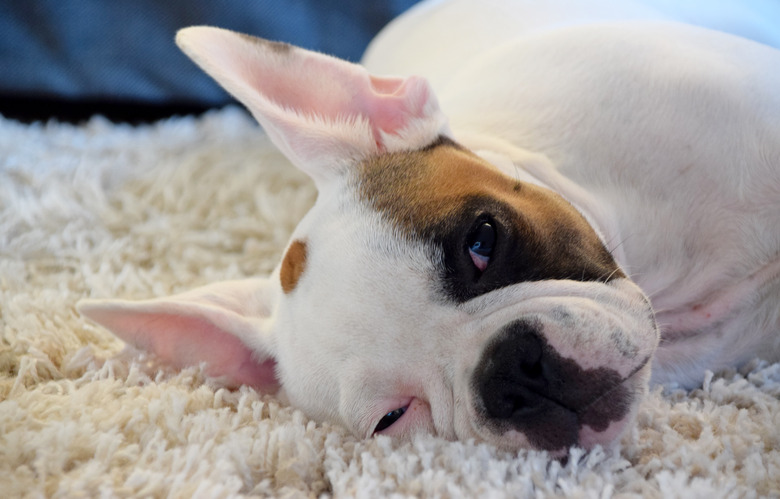When Do Puppies Calm Down?
Welcoming a puppy into your life can be such a rewarding thing for both you and your new canine companion. Most people's early days with their new puppy are spent taking a million photos of their dog sleeping or falling into their own water bowl.
Not long after, however, that little ball of joy who spent 20 hours a day sleeping is now demanding constant attention, exercise, and structure, leaving many to think, "I love my puppy so much, but also... when is this high energy thing going to calm down and give me a break?" The answer to that question is unfortunately uncertain, but several factors, like your dog's breed, size, and health can help you get an idea of when you can look forward to a morning sleeping in.
Puppy development stages
Puppy development stages
In order to predict when your puppy may calm down, it's helpful to understand how puppies grow, both physically and mentally. The Houston SPCA explains that most puppies become fully able to use all of their senses and start to play with their littermates at around three to four weeks old. In the weeks after that early stage of puppyhood, they become weaned and learn appropriate socialization skills like not biting (read: they learn boundaries.)
At around 12 weeks, or 3 months of age, most puppies go to their respective homes, where they continue to grow, learn, and socialize with other dogs and people, assuming the new puppy owners make time for this very important aspect. A "mature" or adult dog is considered to be anywhere between one year old and four years of age during which time unaddressed behavioral issues can start to become apparent, yet they will continue to learn and associate certain things with specific people or places.
Do puppies calm down?
Do puppies calm down?
The age in which your pooch calms down will depend on your puppy and certain aspects about him, like his breed, health, and even his temperament. The general consensus is that most puppies will begin to lose their constant need for stimulation and sometimes, destructive tendencies, at anywhere between 18 months to two years. Growing pains, teething, bladder development, and the exuberance that comes with youth all play a part in a puppy's energy levels and need to explore and exercise.
It's important to remember that every dog will be different. Some puppies are calm, laid back and easy going from the get-go and tend to just be lower-energy dogs. Other dogs may seem to never grow out of the puppy stage and may need frequent attention and physical exercise well into their senior years. Dog breeds known for being less physically active, like bulldogs, may calm down sooner than say, a Labrador, which the Southern California Labrador Retriever Rescue states usually calm down later than most dogs, generally between two and four years old.
How to train a hyper puppy
How to train a hyper puppy
While a consistently lowered energy levels will take time, there are some things you can do to keep your energetic puppy more manageable in the meantime. The American Kennel Club recommends starting off by providing your puppy with daily exercise, ideally on a structured schedule. A lot of dogs will do well with basic playtime and exercise plans, like long walks, runs, or time burning off steam with other dogs at a local dog park. Regular exercise can help prevent a lot of bad behavior, like destructive chewing.
Some dogs, depending on their breed, may benefit from more intensive exercise sessions that focus on their specific needs (for example, a border collie may do well with an agility course, or a working dog like a bloodhound might enjoy from scent-training.)
Dog training is an important part of managing high energy behavior.With any dog, basic commands like sit, stay, and off (or down) will help teach your puppy boundaries and enforce calm behavior, which can come in handy if she's feeling especially rambunctious. You can also try teaching your puppy to "work" for certain things like food, which can stimulate them mentally and physically.
To make your puppy work for her meals, VCA Hospitals recommends using a food toy, which will require your dog to work for her kibble. You can also offer a meal's worth of food as several, small rewards after your dog has responded to a command like sit or stay.


